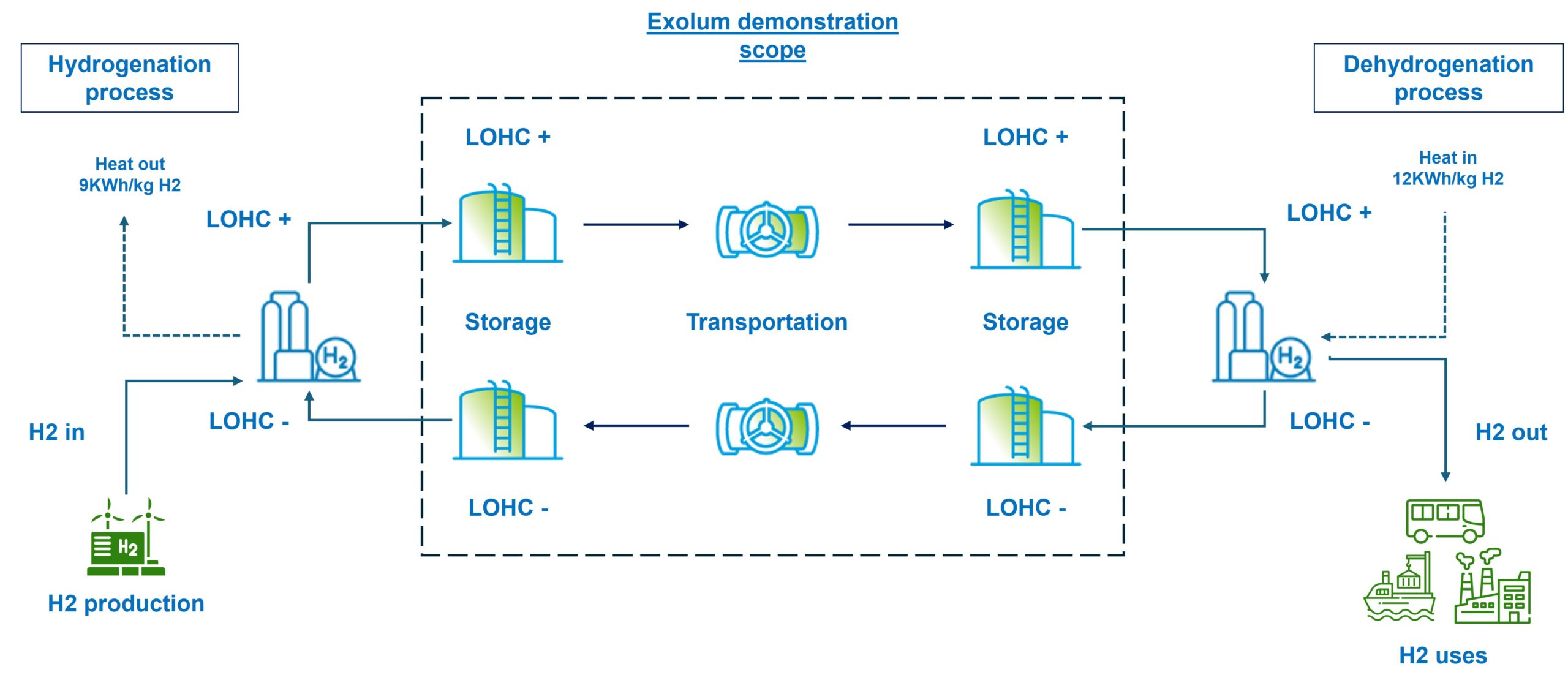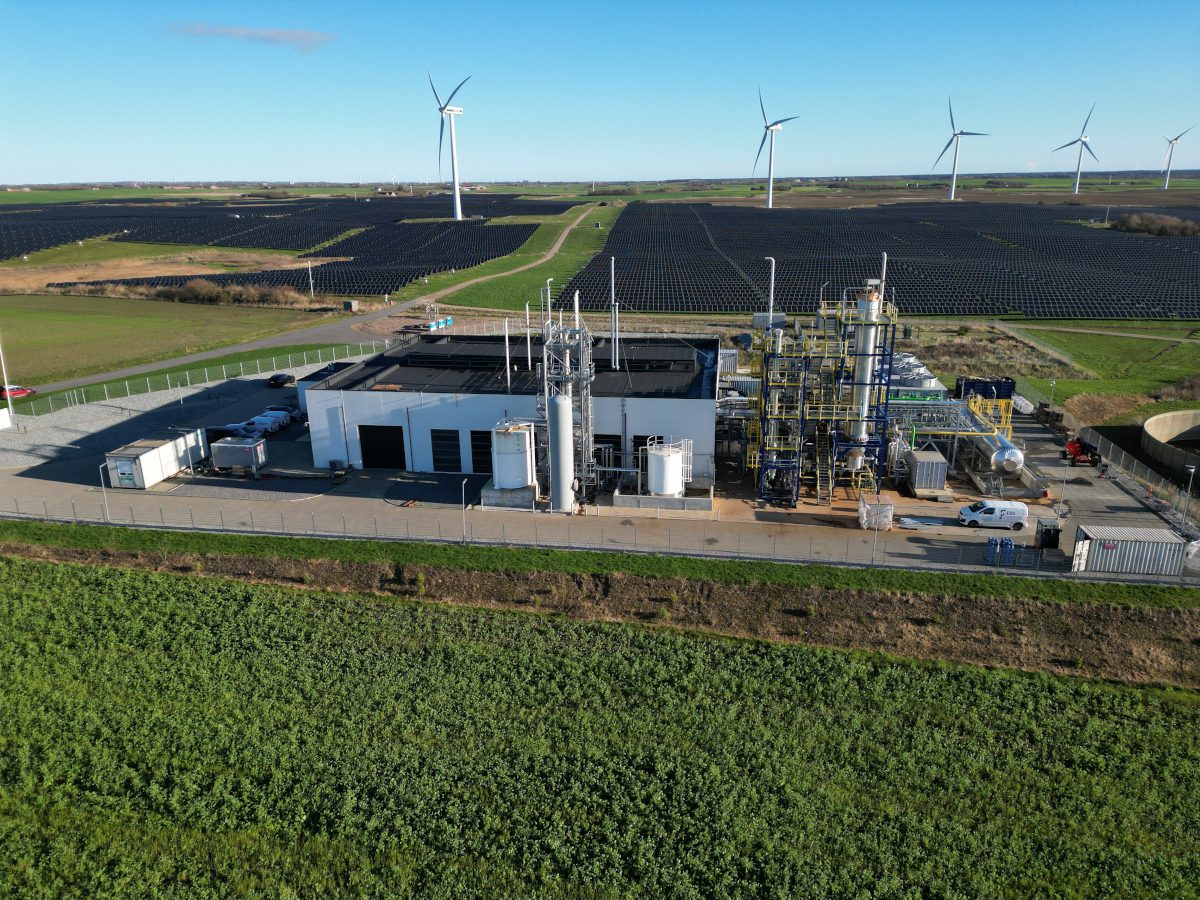Existing petroleum-based pipeline and tank infrastructure can be repurposed to transport and store hydrogen in the form of liquid organic hydrogen carriers (LOHCs), on the evidence of a successful demonstration of this capability from energy logistics company Exolum, with results published on 23 July.
A key challenge with the move to hydrogen fuel – considered a key enabler in the energy transition – is the delivery of economical storage. Exolon has demonstrated that road and aviation fuel pipeline and storage infrastructure can be adapted to safely, efficiently, and cost-effectively store and distribute hydrogen.
Developed in the UK, the demonstration project tested the use of the UK’s existing fuel infrastructure to transport and store LOHCs, and is described as a world-first. It was funded by Innovate UK.
LOHCs are a gasoline-like liquid that can be used to chemically absorb, store, transport, and then release hydrogen. At Exolum’s Immingham site, up to 1 terrawatt hours of hydrogen can be stored within the company’s existing fuel infrastructure, which amounts to around one-third of the UK’s expected hydrogen storage needs by 2030.
Exolon said the project successfully proved that the technology can be integrated into the company’s existing network of fuel pipelines and storage tanks without requiring significant modifications. Technoeconomic analysis also confirmed that storing hydrogen in this way can be more cost-effective and practical than geological storage options – such as salt caverns – even when factoring in the costs associated with converting hydrogen to and from an LOHC.
In the UK, the government has acknowledged that high upfront costs, extended development timelines, and market uncertainty present challenges for the deployment of geological hydrogen storage – an approach it is exploring to help meet its 2030 Clean Power target, with funding mechanisms that may impact energy bills.
Exolum’s alternative offers a complementary pathway, enabling hydrogen to be stored economically and flexibly across a broader range of locations, with lower initial capital investment, at a time when the locations and quantities of hydrogen production and use remain highly certain. Furthermore, the operational costs associated with LOHC-based storage could benefit significantly from continued technological innovation and growing market competition.

The technical test involved transporting 400 million litres of LOHC through a 1.3 km pipeline between Exolum’s Immingham East and Immingham West facilities in the Humber region. Laboratory tests confirmed that the quality of the LOHC remained unchanged throughout the entire process. The volume of hydrogen transported is equivalent to the amount needed to power 450 hydrogen buses.
Nacho Casajus, Global Strategy & Growth Lead at Exolum, stated, “This pioneering LOHC hydrogen transport and storage project demonstrates that our infrastructure is not only efficient in meeting today’s energy needs, but also ready to meet the challenges of hydrogen. It is a readily available, safe, and reliable solution for large-scale hydrogen transportation and storage, offering a cost-effective and flexible alternative to other methods. This can significantly accelerate the transition to a hydrogen economy today and can help countries achieve their ambitious decarbonisation targets with minimal initial investment.”
The firm said the project’s results offer a valuable contribution to energy policy discussions in both the UK and Spain – particularly in advancing hydrogen as an energy vector and supporting industrial decarbonisation. Based on the technical findings of the report, there is now the opportunity for the UK Department of Energy Security & Net Zero to include a commitment to undertake an examination of the wider policy implications of the outcomes of the demonstration, as part of its 2025 update to the Hydrogen Strategy.
A copy of the project outcomes can be found online here.
















